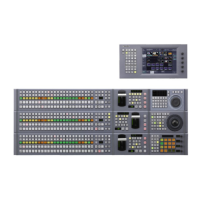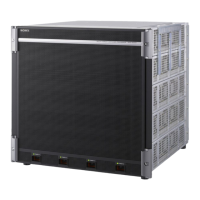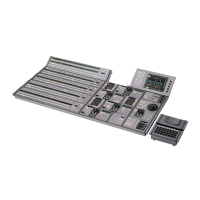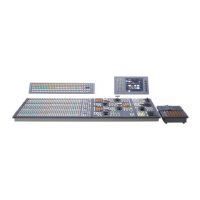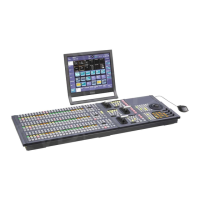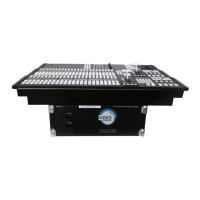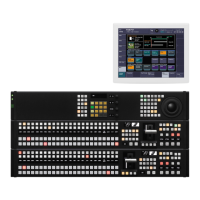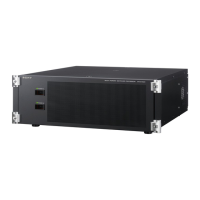Chapter 11 DME Operations
573
DME
Two interfaces are available for the MVE-9000: a dedicated interface (MKE-
9020M) for use in an MVS-8000 series switcher, and an SDI interface (MKE-
9021M).
Notes
When using the SDI interface, the following operations are different from
when using the dedicated interface.
• Setting the input signals from the switcher to the MVE-9000 (AUX bus
outputs), and signals returned to the switcher as primary inputs (reentry
inputs).
See “Setting the AUX Bus Output and Reentry Input” in Chapter 20 (Volume
3).
• Selecting the combiner channels not in the key control block, but in the
Global Effect menu.
See “Combiner Settings” (page 737).
Three-Dimensional Transformations
Transformation is the process of placing a video image in a three-dimensional
DME coordinate space and subjecting it to manipulations such as movement,
rotation, magnification or shrinking.
Three-dimensional coordinate space
Source coordinate space and target coordinate space
Images are placed in one of two types of coordinate space: source coordinate
space and target coordinate space.
• The source coordinate space is a three-dimensional coordinate space with
reference to the image itself. The x- and y-axes are defined parallel to the
plane of the image, and the z-axis is defined perpendicular to the plane of the
image. When you move the image, the coordinate axes also move.
• The target coordinate space is a three-dimensional coordinate space with
reference to the output monitor screen. The x- and y-axes are defined parallel
to the plane of the monitor screen, and the z-axis is defined perpendicular to
the plane of the monitor screen. The coordinates do not move even if the
image moves.

